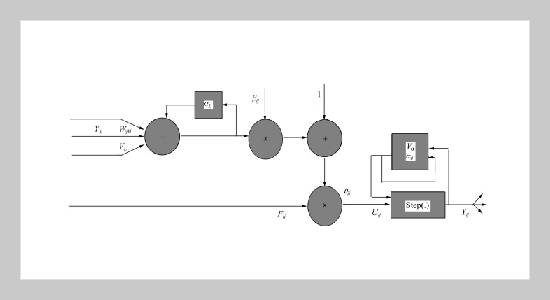Received:
October 15, 2020
Accepted:
December 1, 2020
Publication Date:
June 1, 2021
Copyright The Author(s). This is an open access article distributed under the terms of the Creative Commons Attribution License (CC BY 4.0), which permits unrestricted use, distribution, and reproduction in any medium, provided the original author and source are cited.
Download Citation: ||https://doi.org/10.6180/jase.202106_24(3).0004
ABSTRACT
Medical image fusion technology plays an important role in clinical application, because it contains multimodal image information. The fusion effect of medical images conforms to human visual perception. Therefore, reducing the impact of prior knowledge on the fusion effect and enhancing the detail expression have always been the direction of medial image fusion. A medical image fusion method based on Laplacian pyramid and pulse coupled neural network is proposed in this paper. To solve the problem of image artifacts, the region Laplace pyramid is adopted to improve the pulse coupled neural network in order to save more detailed information and make parameters adaptive in the network. The source images are decomposed into Laplacian pyramids, and the improved pulse coupled neural network is used to generate the optimal weight graph to guide the fusion process. The fused images are generated by the reverse process. The experimental results show that compared with the state-of-the-art fusion methods, in terms of subjective effect, the fused image in this paper can retain the edge information of the source image and obtain better visual effect. In terms of objective indicators, the fused images obtained by the proposed method can achieve better results such as mutual information (MI), edge evaluation factor (QAB/F ) and structural similarity (SSIM).
Keywords:
Medical image fusion, pulse coupled neural network, Laplacian pyramid, reverse process
REFERENCES
- [1] Alex Pappachen James and Belur V Dasarathy. Medical image fusion: A survey of the state of the art. Information Fusion, 19(1):4–19, 2014.
- [2] Gaurav Bhatnagar, Q. M. Jonathan Wu, and Zheng Liu. Human visual system inspired multi-modal medical image fusion framework. Expert Systems with Applications, 40(5):1708–1720, apr 2013.
- [3] Wu Fan, Gao Yuan, and Pinle Qin. Medical image fusion algorithm based on Laplacian pyramid and CNN. Computer Engineering and Applications, 56(15):208–214, 2020.
- [4] Tannaz Akbarpour, Mousa Shamsi, Sabalan Daneshvar, and Masoud Pooreisa. Medical image fusion based on nonsubsampled shearlet transform and principal component averaging. International Journal of Wavelets, Multiresolution and Information Processing, 17(4), jul 2019.
- [5] Shoulin Yin and Ye Zhang. Singular value decomposition-based anisotropic diffusion for fusion of infrared and visible images, apr 2019.
- [6] Lin Teng, Hang Li, and Shoulin Yin. Modified pyramid dual tree direction filter-based image denoising via curvature scale and nonlocal mean multigrade remnant filter. International Journal of Communication Systems, 31(16), nov 2018.
- [7] Shoulin Yin, Hang Li, and Lin Teng. Semantics automatic annotation in medical image based on deep learning. In Basic & Clinical Pharmacology & Toxicology, volume 124, pages 19–20. WILEY 111 RIVER ST, HOBOKEN 07030-5774, NJ USA, 2018.
- [8] Lin Teng, Hang Li, Shoulin Yin, and Yang Sun. Improved krill group-based region growing algorithm for image segmentation, oct 2019.
- [9] Rui Shen, Irene Cheng, and Anup Basu. Cross-scale coefficient selection for volumetric medical image fusion. IEEE Transactions on Biomedical Engineering, 60(4):1069– 1079, apr 2013.
- [10] Yu Liu, Shuping Liu, and Zengfu Wang. A general framework for image fusion based on multi-scale transform and sparse representation. Information Fusion, 24:147–164, 2015.
- [11] Shoulin Yin and Hang Li. Hot Region Selection Based on Selective Search and Modified Fuzzy C-Means in Remote Sensing Images. IEEE Journal of Selected Topics in Applied Earth Observations and Remote Sensing, 13:5862– 5871, 2020.
- [12] Guo Li Chen. Fusion algorithm of infrared and visible images based on NSCT and PCNN. In Processing of 2014 International Conference on Multisensor Fusion and Information Integration for Intelligent Systems, MFI 2014. Institute of Electrical and Electronics Engineers Inc., dec 2014.
- [13] Xingbin Liu, Wenbo Mei, and Huiqian Du. Multimodality medical image fusion algorithm based on gradient minimization smoothing filter and pulse coupled neural network. Biomedical Signal Processing and Control, 30:140–148, sep 2016.
- [14] Sylvain Paris, Samuel W. Hasinoff, and Jan Kautz. Local Laplacian filters: Edge-aware image processing with a Laplacian pyramid. Communications of the ACM, 58(3):81–91, mar 2015.
- [15] Shoulin Yin and Jing Bi. Medical image annotation based on deep transfer learning. Journal of Applied Science and Engineering, 22(2):385–390, 2019.
- [16] N Sivakumar and K. Helen Prabha. A wavelet and contourlet based hybrid fusion for medical images using laplacian pyramid and directional filter banks with weighted average method. Journal of Computational and Theoretical Nanoscience, 14(4):1976–1980, 2017.
- [17] Kai jian Xia, Hong sheng Yin, and Jiang qiang Wang. A novel improved deep convolutional neural network model for medical image fusion. Cluster Computing, 22:1515–1527, jan 2019.
- [18] Feiqiang Liu, Lihui Chen, Lu Lu, Awais Ahmad, Gwanggil Jeon, and Xiaomin Yang. Medical image fusion method by using Laplacian pyramid and convolutional sparse representation. In Concurrency Computation, volume 32. John Wiley and Sons Ltd, sep 2020.
- [19] Bo Li, Hong Peng, Xiaohui Luo, Jun Wang, Xiaoxiao Song, Mario J. Pérez-Jiménez, and Agustín RiscosNúñez. Medical image fusion method based on coupled neural P systems in nonsubsampled shearlet transform domain. International Journal of Neural Systems, 2020.
- [20] C. S. Asha, Shyam Lal, Varadraj Prabhu Gurupur, and P. U.Prakash Saxena. Multi-Modal Medical Image Fusion with Adaptive Weighted Combination of NSST Bands Using Chaotic Grey Wolf Optimization. IEEE Access, 7:40782–40796, 2019.
- [21] Lei Wang, Bin Li, and Lian Fang Tian. EGGDD: An explicit dependency model for multi-modal medical image fusion in shift-invariant shearlet transform domain. Information Fusion, 19(1):29–37, sep 2014.
- [22] Youwen Zhuang, Kun Gao, Xianghu Miu, Lu Han, and Xuemei Gong. Infrared and visual image registration based on mutual information with a combined particle swarm optimization - Powell search algorithm. Optik, 127(1):188–191, 2016.
- [23] Zhiqin Zhu, Mingyao Zheng, Guanqiu Qi, Di Wang, and Yan Xiang. A Phase Congruency and Local Laplacian Energy Based Multi-Modality Medical Image Fusion Method in NSCT Domain. IEEE Access, 7:20811– 20824, 2019.









